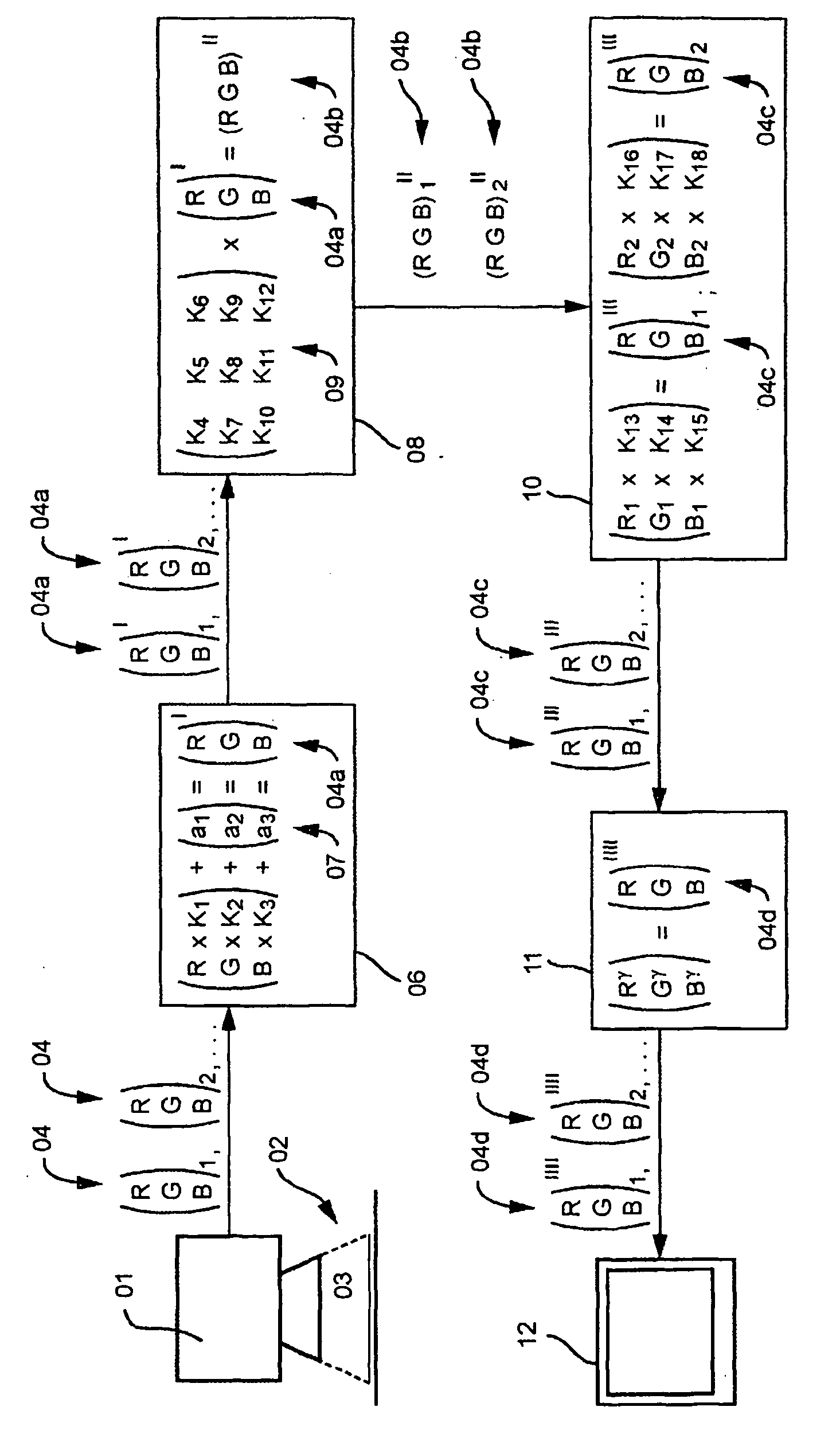Method for correcting the image data o a camera system
- Summary
- Abstract
- Description
- Claims
- Application Information
AI Technical Summary
Benefits of technology
Problems solved by technology
Method used
Image
Examples
Embodiment Construction
[0026] Referring to FIG. 1, a printed product 03, is arranged in an observation area 02 and is imprinted in colors. An image of printed product 03 is recorded with a color camera 01, preferably a CCD camera. A CCD chip is provided in the color camera 01, which converts the image information in the observation area 02 into electronic image data. In the course of this conversion, an output signal vector 04 is generated by each light-sensitive pixel of the CCD chip. A number of output signal vectors 04 corresponding to the number of pixels on the CCD chip are made available by the color camera 01 for further processing.
[0027] Each output signal vector 04 preferably includes three coefficients R, G and B. The coefficients R, G and B correspond to the color values of the three color channels red, green and blue, wherein the color of the printed product 03 at the position in the observation area which was recorded by the corresponding pixel, corresponds to the mixture of the three color ...
PUM
 Login to View More
Login to View More Abstract
Description
Claims
Application Information
 Login to View More
Login to View More - R&D
- Intellectual Property
- Life Sciences
- Materials
- Tech Scout
- Unparalleled Data Quality
- Higher Quality Content
- 60% Fewer Hallucinations
Browse by: Latest US Patents, China's latest patents, Technical Efficacy Thesaurus, Application Domain, Technology Topic, Popular Technical Reports.
© 2025 PatSnap. All rights reserved.Legal|Privacy policy|Modern Slavery Act Transparency Statement|Sitemap|About US| Contact US: help@patsnap.com


